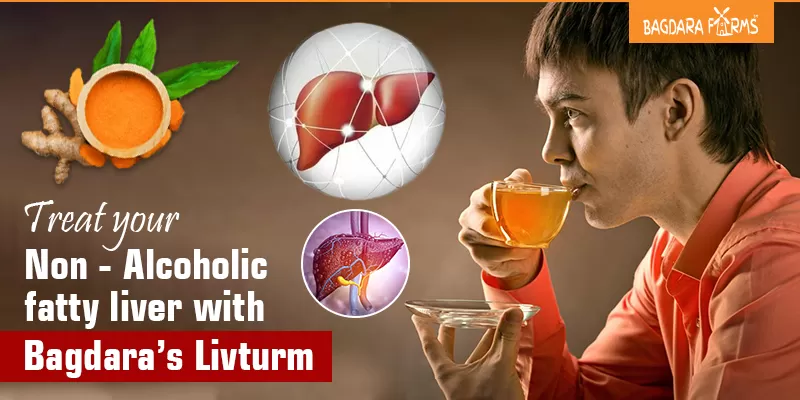ALL ABOUT THE PAINFUL NON ALCOHOLIC FATTY LIVER DISEASES
Our liver is the largest organ in the body, and it has some equally big tasks to perform:
sieving the body’s blood, treating nutrients, helping to combat infection, generating proteins you need for blood clotting, and the list is long.
So much work means our liver is susceptible to battering on multiple fronts. Any damage can lead to, scarring (cirrhosis) eventually causing liver failure or cancer.
While alcohol is commonly associated with abuse, there are many other culprits.
The health conditions, drugs, and lifestyle habits may cause some serious damage to the liver as well.
What Is Non-Alcoholic Fatty Liver Disease?
NAFLD is an aggressive form of fatty liver disease, which is marked by liver inflammation and may progress to advanced liver cirrhosis and liver failure.
NAFLD is the accrual of extra fat in liver cells not caused by alcohol. Although, it is normal for the liver to contain some fat, but if more than 5% – 10% percent of the liver’s weight is fat, then it is called a fatty liver (steatosis).
The more severe form of NAFLD is called non-alcoholic steatohepatitis (NASH).
NASH causes the liver to swell and become damaged.
What Are The Symptoms Of Non -Alcoholic Fatty Liver Diseases?
Fatigue, Pain or discomfort in the upper right abdomen.
5 Signs and symptoms of NASH and advanced scarring (cirrhosis) include:
- Abdominal swelling (ascites)
- Enlarged blood vessels just beneath the skin’s surface
- Enlarged spleen
- Red palms
- Yellowing of the skin and eyes (jaundice)
What Causes Non –Alcoholic Fatty Liver Disease?
- Overweight or obesity
- Insulin resistance, in which your cells don’t take up sugar in retort to the hormone insulin
- Hyperglycemia signifying prediabetes or type 2 diabetes
- High levels of fats, mostly triglycerides, in the blood
Are Type 2 Diabetes, Obesity, And Fatty Liver Connected?
According to https://www.everydayhealth.com/type-2-diabetes/
Fatty-liver-disease-connection.aspx Diabetes is not the cause of fatty liver disease.
But both the diseases occur in the same person because the similar conditions are common in both the situations. “So, it’s not the diabetes per se. People with diabetes also have obesity and insulin resistance, and so the fatty liver is thought to be part of that,” Dr. Einhorn explains.
Obesity and Type 2 diabetes is associated with a range of liver abnormalities, known as non-alcoholic fatty liver disease (NAFLD), categorized by an increase in intrahepatic triglyceride (IHTG) content (i.e. steatosis) with or without inflammation and fibrosis.
How Serious Is A Fatty Liver?
Mostly, fatty liver disease doesn’t cause any grave complications or avert your liver from running typically.
While in some cases, fat deposits could cause inflammation and damage to the liver, paving way for a severe form of this condition, which is non-alcoholic steatohepatits (NASH).
NASH can result in the mutilation of the liver, a possible life-threatening condition called cirrhosis.
What Is The Life Expectancy Of Someone With A Fatty Liver And What If It Goes Untreated?
The great news is that you can often thwart or even reverse fatty liver disease with lifestyle changes.
Patients can live for many years with NAFLD, about 30% — ultimately end up with an inflamed liver or NASH (non-alcoholic steatohepatitis), with scarring.
About 20% will develop last stage of cirrhosis, which can finally result to liver failure and cancer.
Untreated cirrhosis of the liver sooner or later leads to liver failure or liver cancer.
What Food Should I Avoid In Non-Alcoholic Fatty Liver Disease?
6 foods you should avoid in non-alcoholic fatty liver disease
- Poultry, except for lean white meat
- Full-fat cheese
- Yogurt, except low-fat
- Red meat
- Baked goods and fried foods made with palm or coconut oils.
- Sugary items like candy, regular soda, and other foods with added sugars including high-fructose corn syrup
Is An Antioxidant Good For Fatty Liver?
Antioxidants forage free radicals and preserve the oxidative balance in the liver.
When the liver oxidative balance is disrupted, it results in oxidative stress. Oxidative stress leads to lethal processes in the liver and results in liver diseases.
Therefore, restoring antioxidants is essential to maintain homeostasis.
One method of restoring antioxidants is to consume natural compounds with antioxidant capacity.
How Do You Reduce Inflammation Of A Fatty Liver?
- Get Active
- Avoid Foods With Added Sugars
- Target High Cholesterol
- Try An Omega-3 Supplement
- Take Curcumin Rich Supplement
- Lose Excess Weight
FINALLY
Fatty liver can pave way to a number of health problems.
Thankfully, it can be reversed if addressed at an early stage. Following a healthy lifestyle, increasing physical activity, and taking natural supplements can lessen excess liver fat and decrease the risk of its evolution to more serious liver disease.
If you are looking for a curcumin-rich supplement, Livturm at Bagdara Farms has some great results.
Buy our initial course for 2 months with 3 Livturm bottles which you can take keep in your travel bag whenever you travel. A natural way to heal liver without any side effects and unwanted chemicals.

